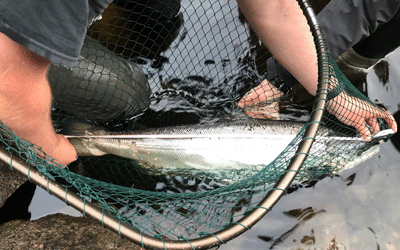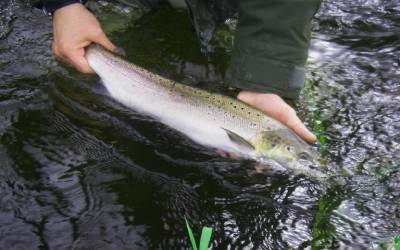Since 1994, when Scotland first began recording numbers of fish returned, the percentage of rod-caught salmon released back into the water has risen significantly. Numerous angling and radio-tracking studies have demonstrated high survival rates and successful spawning for salmon released after capture – up to 100% under certain conditions. However, a salmon’s chances of survival decrease if it’s played for too long, kept out of water, or mishandled. The simplest means for anglers and ghillies to make a positive and significant contribution to increasing fish populations is through practicing responsible catch and release. 
Due to conservation concerns for early running Atlantic salmon, catch and release is now mandatory across Scotland until 31 March, and in all rivers designated by Scottish Ministers as grade three based on the conservation status of their stocks. As well as these statutory measures, on rivers where fish may still be taken, many fishery owners require that fish be returned for conservation reasons.
You can read our latest Guide to Best Practice Catch and Release. The guide’s primary purpose is to provide practical advice and guidance to anglers to maximise the survival of salmon which anglers choose to release for conservation purposes.
Keeping fish wet and minimising handling gives fish the best chance for a safe return to the water – we support the campaign to Keep Fish Wet . Science shows that even small changes in how an angler catches, handles, and releases a fish can have positive outcomes once that fish swims away. Not only does using best practices increase survival rates of fish, but it also helps fish return to their normal behaviour as quickly as possible after release. Using best practices for catch-and-release is a quick and effective way to put conservation in to practice.
We are presently working on updated guidance on catch and release, with a strong focus on fish handling. Higher water temperatures, increased air exposure, biosecurity risks, fish weighing and photography all create greater stress for fish, and these are areas that will be covered in our new guidance.
You can view some of our members’ guidance on catch & release, fish handling and photography guidelines below:
- River Spey Fish Handling and Photography Guidelines
- River Dee – Fish Handling
- River Tay C&R Best Practice
- River Tweed Angling Code
